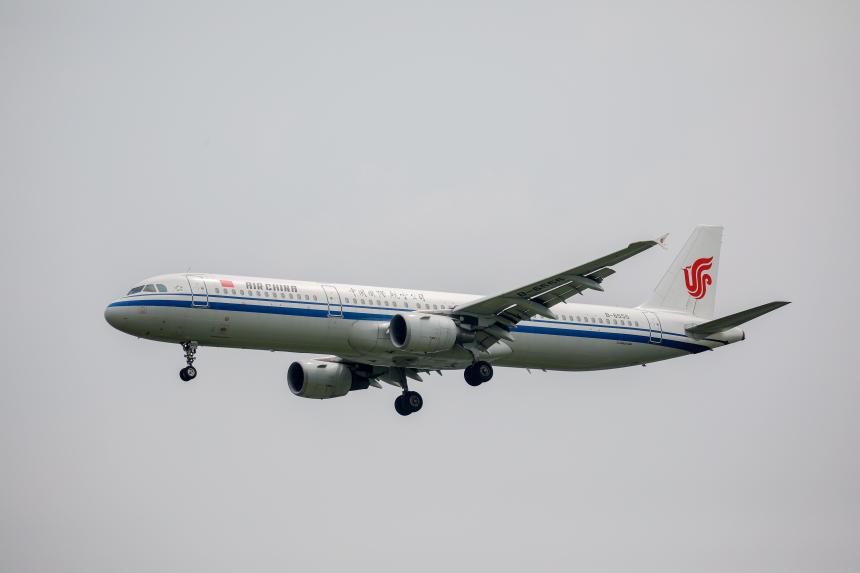WASHINGTON – A journey from Boston to Beijing pre-pandemic used to take Mr Wan Xiaofeng 17 hours by air with a single stopover, typically in Chicago or Washington.
Last week, he had to make two stops – in Los Angeles and Tokyo – before landing in Beijing 30 hours after he took off in Boston. A previous trip in April took 40 hours.
“It’s just too physically taxing. (The flight time) certainly has made the journey much more exhausting,” said Mr Wan, associate dean of admission and coordinator of international recruitment at Amherst College in Massachusetts, who travels to China for work.
“I really dreaded coming back this time because of the flights,” he told The Straits Times.
He may have better options from the end of October, when the United States and China increase the number of direct round-trip flights in a bid to improve the flow of people and trade.
Currently, each country’s airlines can make a combined 12 weekly flights. From Friday, Washington will allow Chinese airlines to operate up to 18 weekly flights to the US, and this will go up to 24 starting Oct 29. Beijing has agreed to the same increase for US carriers.
But the number is still a far cry from the more than 150 round-trip flights allowed for both Chinese and US carriers before the pandemic.
Analysts said the increase, while welcome, is still a drop in the ocean and unlikely to make a big immediate impact on people-to-people ties.
They added that the boosted flight frequencies are most likely to benefit people with strong reasons to travel between the US and China, who are now stuck with few available flights at sky-high prices due to Covid-19 restrictions.
The increase in flights comes as Beijing drops pandemic restrictions on group tours for more countries like the US.
“On the US side, the biggest beneficiaries are likely to be business people and academics – that is, people with strong motivations to go but who have been deterred to varying degrees by high costs or inconvenient routings,” said University of Pennsylvania political science and law don Jacques deLisle, director of its Centre for the Study of Contemporary China.
The flights may also not make a big impact on tourism, even though Beijing earlier in August lifted its pandemic-era ban on outbound group tours to the US and elsewhere.
Said Professor deLisle: “The flight numbers are just too small to be a big boon in terms of tourism.”
But, he added, even significantly reduced demand for tourism is still likely to exceed the available seats from the higher flight frequencies.
US Commerce Secretary Gina Raimondo, who began her four-day trip to China on Sunday, said she wanted to boost tourism between the two countries. China returning to pre-pandemic US tourism levels would add US$30 billion (S$40.7 billion) to America’s economy and 50,000 US jobs, she added.
While the increase in flights will also make life easier for Chinese students in the US, it will not have much impact on incoming or returning students, said Mr Wan.
He noted that many who are now travelling back to the US for the beginning of college terms in late August or early September would already have bought their tickets.
Moreover, it will do little to ease the larger concerns of students and parents who view the US as an increasingly hostile place in which to study and live, said experts.
There were about 290,000 Chinese students in the US in the 2021-2022 academic year, about 8.6 per cent less than in the previous year, and 22 per cent less than the year before, according to data from the Institute of International Education.
Mr Wan said that while health and travel restrictions initially discouraged student enrolment, given the bans on US-China flights, parents became concerned about the rise in anti-Asian racism in America.
“That really concerned Chinese parents thinking about sending their children to a country where they might be harmed physically or verbally, because of their skin colour. That’s new to Chinese families as well, because they don’t really think about that when they’re in China or in Asia,” he added.
Physical safety is also a top concern, given the epidemic of gun violence in America, he added.
Worsening US-China relations are an underlying concern that parents also keep in mind while making their decisions, said Mr Wan, adding that the former Trump administration’s hostile political rhetoric against Chinese nationals had been a big worry.
He said: “That was a big deterrent for them, when they thought about sending their children to a country where they knew they’re not welcomed by the top government.”
He added: “That has not been a huge issue since the Biden administration took office, but that can change... They don’t know what’s going to happen with the 2024 (presidential) election.”
Experts nonetheless welcomed the expansion in US-China flights, though they reckoned it would do little to reverse worsening relations.
“It’s better than not increasing the number of flights. But I think it is a small blip in the larger, and still largely bad, relationship,” said Prof deLisle.
University of Pennsylvania legal scholar Neysun Mahboubi said: “Of course, it’s a sign of progress, but it’s a very limited, incremental step.”
He added: “If this is the best we can do at a moment of relative calm and stability in the US-China relationship, it is natural to wonder when, if ever, we will return to the number of flights and degree of people-to-people exchange that were the benchmark in the past.”


